April 12, 2024
What A Stuff Up!
Posted by gleneira under GE Governance, GE Service Performance, GE Transport[7] Comments
March 23, 2024
Heritage: Bayside Versus Glen Eira
Posted by gleneira under Councillor Performance, GE Council Meeting(s), GE Governance, GE Open Space, GE Planning, GE Service Performance, GE Transport1 Comment
Bayside council completed a Panel Hearing during February 2024 for its heritage proposed amendment C192. The report is not yet available. What is significant in this council’s approach to preserving heritage when compared to Glen Eira is the insistence on the ‘value’ of heritage to the entire community. The Glen Eira approach has simply stated that because council has identified certain areas as suitable for ‘housing growth’ heritage can be overlooked!
Bayside council’s submission to the recent planning panel is fascinating when seen in the light of Glen Eira’s approach. Our council tells us repeatedly that there could be serious ‘social’ and ‘economic’ drawbacks if certain sites are allowed to remain in the existing heritage overlays. They can therefore be removed. Bayside counters such views with the following extracts from its formal submission. We’ve uploaded several sections from this document. Please note the differences in approach and what this means for heritage preservation.
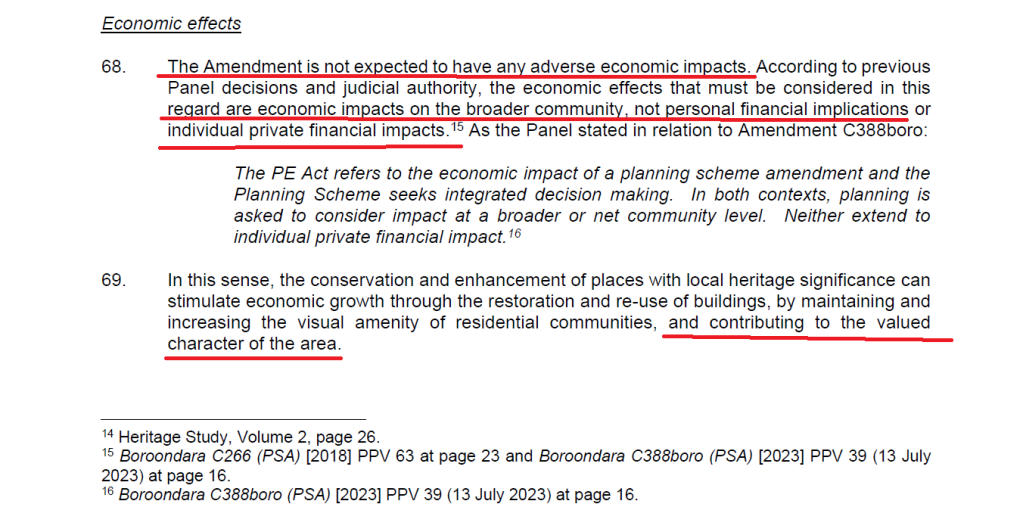

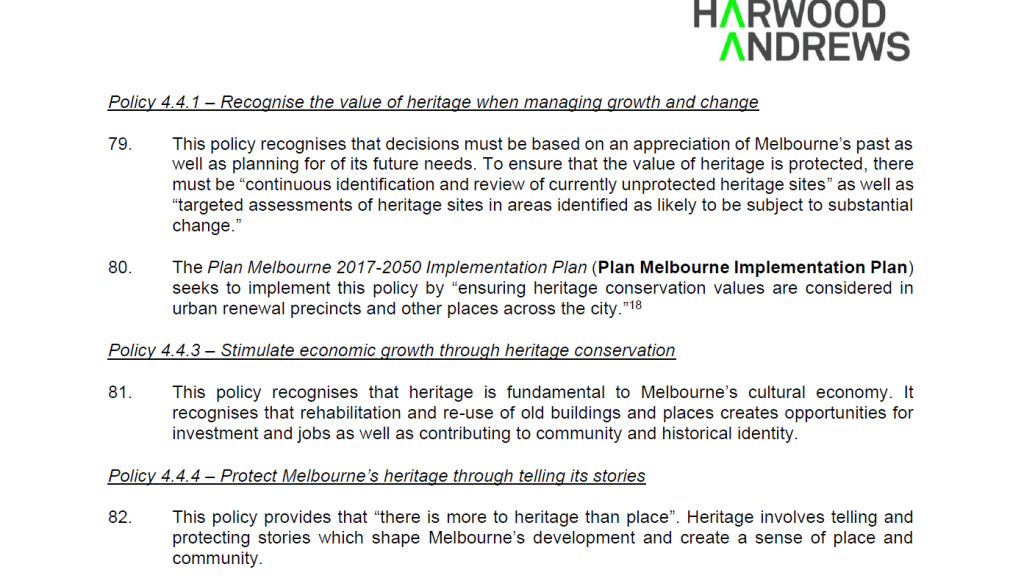
March 20, 2024
Heritage Versus Development!
Posted by gleneira under Councillor Performance, GE Council Meeting(s), GE Governance, GE Planning, GE Service Performance, GE Transport[3] Comments
Despite persistent claims from councillors and this administration that preserving heritage is vitally important, last night’s council meeting provided conclusive proof that in the choice between facilitating development or preserving heritage listed sites, heritage would always lose.
The issue surfaced with the proposed amendment to the Elsternwick heritage study which is now seeking ministerial approval for advertising. Repeated time and time again throughout the various attachments we find the following (verbatim) paragraph:
Including these sites within a Heritage Overlay would negatively impact on potential future housing growth within locations that Council has resolved to allocate to housing growth. This inconsistency has social and economic implications. When balancing Council’s adopted strategy for housing growth opportunities in these locations with heritage protection, it is considered that in these two instances, housing growth should prevail.
We note that there is no explanation of what these ‘social and economic implications’ are, nor how they are assessed and verified. Surely the preservation of heritage buildings has its own wider, ‘social’ benefits?
All of this stems back to 2019 when council attempted to have amendment C203 accepted. The Minister or department decided at that time that not all the nominated precincts be included because this would impede development. A department letter to council stated:
“At this stage it is not considered appropriate to apply the Heritage Overlay more extensively in Elsternwick given that Council is yet to seek authorisation for a planning scheme amendment to implement the Elsternwick Structure Plan. Doing so could, by default, lead to heritage controls becoming the primary driver for development outcomes within the Elsternwick Activity Centre.
Council’s response? Not a whimper! No public questioning of the legality and common sense in 2019 and not again in 2024. Council meekly accepted the decision and has now enshrined this in the latest amendment attempt. The result is the continued loss of heritage buildings in Glen Eira, and particularly in Elsternwick.
When Amendment C203 finally went to a planning panel, the members were not averse to stating clearly their disapproval of the imposed conditions. We have uploaded two pages from the panel report at the conclusion of this post. Their conclusions questioned the legality and evidence for the exclusion of the nominated precincts. They found that the amendment:
1. Is counter to Planning Practice Notes 1, 58 and 60 and that
2. Development potential is not a valid criterion when considering heritage potential.
3. Development potential is NOT prioritised above any other criteria in the planning provisions
4. No valid justification has been provided for the exclusion of the precincts
5. Contravenes Plan Melbourne where heritage is said to be ‘fundamental’ (Clause 4.4.3) to the state’s cultural identity.
Last night’s officer’s report confirms what an absolute shambles planning, and particularly heritage has been in Glen Eira. The latest amendment is simply trying to largely rectify the indifference and errors of the past when countless streets containing confirmed heritage overlays were rezoned as Residential Growth Zones (RGA and 4 storeys) when they should not have been! Here’s what the latest heritage report states:
The application of the RGZ in these almost exclusively residential Heritage Overlay areas is contrary to the guidance of PPN91 (Planning Practice Note 91 – Using the Residential Zones), which identifies that there will be difficulty in reconciling the conflicting objectives of substantial housing change (through the application of the RGZ) and the conservation of existing buildings (by applying the Heritage Overlay).
In other words, the introduction of the residential zones in 2013 was a disaster for heritage. Many sites in these heritage overlays have now been demolished and replaced with 4 storey apartment blocks as a result. We remind readers that we are yet to see a full and decent review of this zoning!!!!!
Our argument is simple. If something is determined to be worthy of heritage listing then it MUST take precedence over development potential. Council chooses the alternative – development always comes first!
The vote last night was 7 to 2. The opposing councillors were Esakoff and Parasol and NOT because they were against the removal of so many heritage sites, but because they wanted one nominated dwelling removed from being included in the overlay, even though it is surrounded by heritage cited properties! So much for giving a damn about heritage in Glen Eira!!!!!
Here’s the Planning Panel report comments –
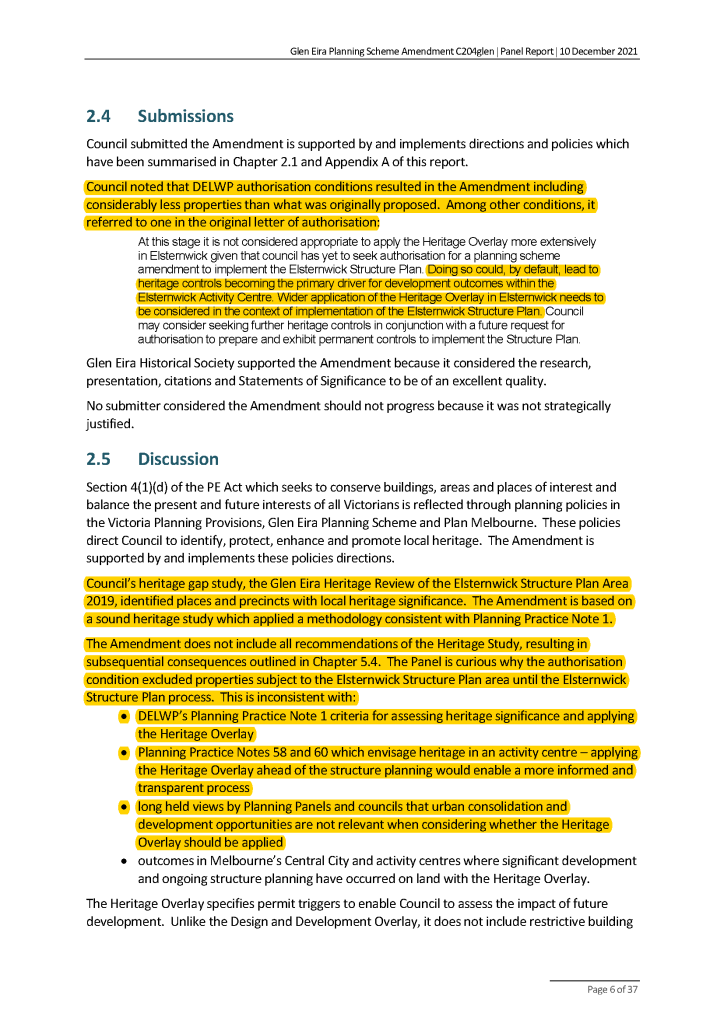
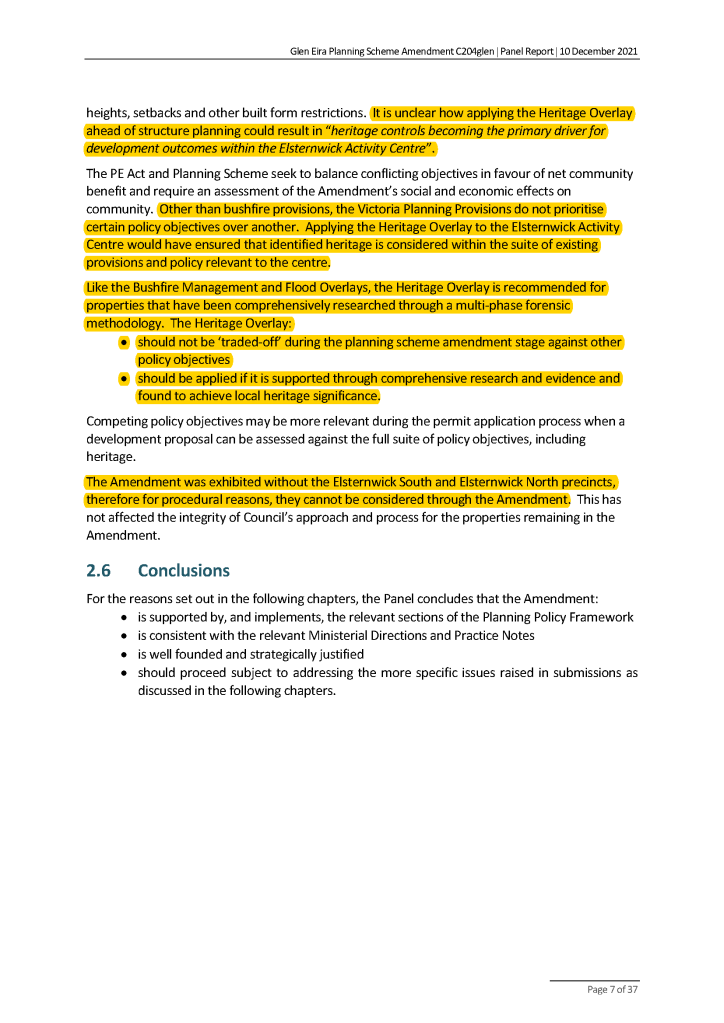
February 25, 2024
Tree Protection: The Need For Full Transparency
Posted by gleneira under Councillor Performance, GE Consultation/Communication, GE Council Meeting(s), GE Governance, GE Service Performance[8] Comments
Council is proposing a new Local Law designed to protect not only SIGNIFICANT trees, but also canopy trees on private property which qualify under height and width criteria. This is certainly an improvement and should protect more existing trees. However, how many existing canopy trees will actually be covered by the proposal(s) depends to a large extent on how well the upcoming Local Law is written and what is its true intent. What also needs to be considered is to what extent all decisions will be fully transparent and who will make these decisions. Will it be left entirely in the hands of officers, or will councillors have the final say as in numerous other councils on which permit applications are granted or refused?
The officer’s report includes the following paragraphs on this last point:
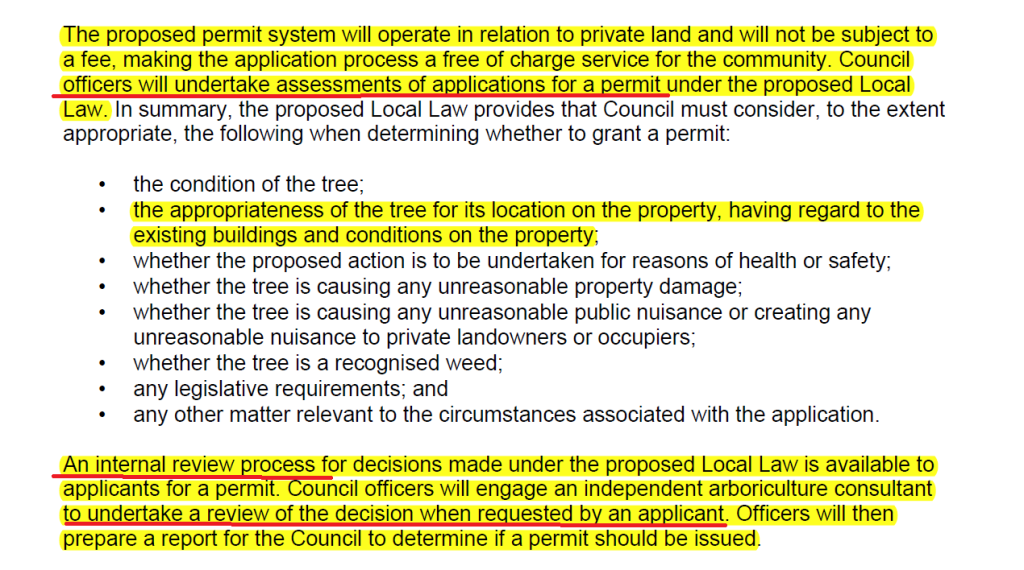
The above is very ambiguous. We are told that officers will presumably undertake the initial assessment when there has been a permit application, and this is fair enough. The final paragraph however clearly states that there will be an ‘internal review process’ but only for those applicants who have requested a review. Thus, if a permit has been granted, then there is no need for a review! Officer’s will have made the decision and that’s the end of it with no councillor involvement, or no objection rights by anyone it would seem.
The paragraph continues that a report will be prepared but this is dependent on whether or not the applicant has chosen to seek a review as stated previously. What remains unclear is whether the officer report will also cover applications that have been granted a permit ‘internally’ and whether the tabled report is there simply for ‘noting’ or for councillors to make actual decisions? Even with the existing significant Tree register local law, councillors are sidelined and all decisions are made by officers. There is therefore no transparency and no accountability for decision making. We suspect that the proposed new law will be the same. Surely the onus on council is to clear up any ambiguity and to ensure residents that trees will be fully protected.
There are other issues with the proposals as well. Here is our take on these:
Clause 2(b)of the proposed Local Law states that a permit is required to prune or direct, authorise or allow to be pruned a Classified Tree or a Canopy. But we then get the ‘exemption’ that this clause does not apply if Council is notified within five (5) working days of the commencement of the pruning.
This may sound quite innocuous, but it has major repercussions. Why the 5 days grace? Most pruning would be concluded well within 5 days. If an applicant then calls council and says ‘I’ve pruned my tree’ what evidence exists that the pruning was in accordance with the 10% maximum reduction of canopy allowed? What evidence do we have that the branches were less than 10cm in width?
Bayside, by contrast, has processes that would ensure the pruning is done legally. They insist on:
- Photos taken BEFORE and AFTER
- That the work be done by a qualified arborist
- That the arborist has to sign off by certifying the work done.
NONE of the above applies in Glen Eira!!! This leaves a huge loop hole that can easily be taken advantage of.
Compounding the problem we then get this additional clause regarding pruning:
Subclause (2)(b) does not apply to pruning, which is carried out to the following specifications—
(a) up to a maximum of 10% of the Classified Tree’s or Canopy Tree’s total volume within 12 calendar Months
We assume that this means there can be numerous episodes of lopping throughout a 12 month period. But given that no permit is required we again lack evidence that only 10% has been lopped? Nor are we told whether or not each lopping requires council to be notified – even within the 5 day period.
One other change to the current Local Law is also worth commenting upon. Please read the following carefully:
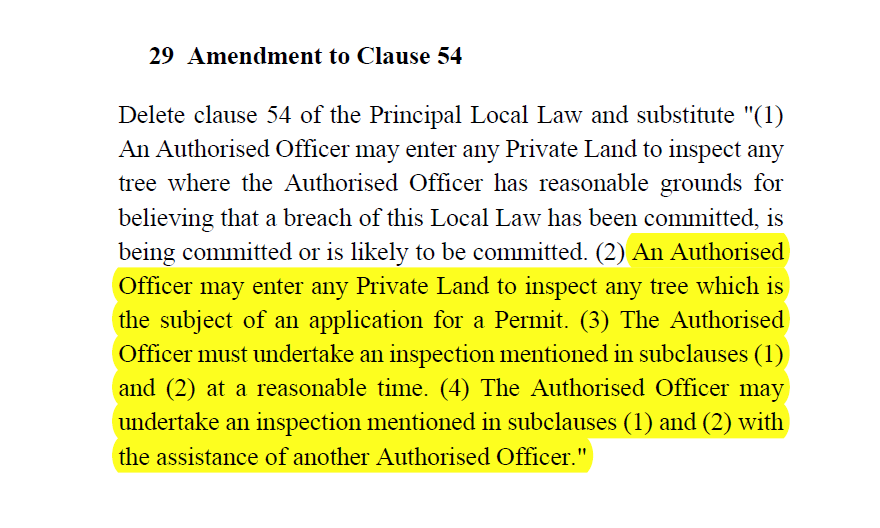
Questions abound. Consider this scenario – No permit has been applied for. A neighbour complains to council that a large canopy tree is being removed next door. According to the current Local Law, the property could be entered by a council officer and inspected. With the proposed new law, this could only happen if the owner of the tree has ALREADY APPLIED FOR A PERMIT. If he/she hasn’t, then they the new law does not provide them with the power to investigate and potentially call a halt to the tree removal!
CONCLUSION
Whilst these proposed changes are definitely an improvement and an attempt to protect our existing canopy trees, they simply do not go far enough. We fully accept that there may be situations where a tree presents a major health risk due to storms, etc and should be lopped/removed in the name of safety. But, there are far too many loopholes in the proposed new law that can be exploited. All that is required is that clauses such as Bayside and other councils have is included and that the essential role of monitoring evaluations occurs by councillors. What role councillors will play needs to be spelt out clearly. This has not been done.
Leaving everything in the hands of officers does not engender full transparency and accountability in decision making. Bayside for example also publishes on a regular basis a list of permits granted for the removal of trees. There is nothing in this proposed law which will ensure that decisions on whether to refuse or grant a permit will ultimately be made in the full council chamber so that all residents can see and listen to the evidence.
ONE FINAL POINT. All of the above of course is dependent on whether a planning permit for the site has been granted. The permit could and often does include permission to remove existing trees. Given that planning permits are largely decided by officers and that at least 15 objections are required before the application can go to council, this again places enormous power in the hands of officers.
February 19, 2024
Magee Will Not Stand In 2024!
Posted by gleneira under Councillor Performance, Miscellaneous[4] Comments
The following post appeared recently announcing Magee’s decision not to stand for the 2024 council elections. See: https://www.linkedin.com/feed/update/urn:li:activity:7163721229558800384/
We have copied the post below –
After almost 16 wonderful years as Councillor for Tucker Ward in the City of Glen Eira, I have decided not to contest the 2024 local government election.
Those who know me will know that I have always been a great believer in renewal. In any democracy, it’s important to have new faces representing the rich diversity of their communities. Now is the time for someone new to take on this important role. I will remain a Councillor until the next election in October.
It has been an absolute honour and privilege to represent the people of Tucker ward, as well as to serve as Mayor for three terms and Deputy Mayor for two terms.
I am and always will be a fierce advocate for local government. Councils are the closest level of government to the people. While we have the smallest budgets,3% off all taxes are collected by councils we are responsible for one thread off our country’s infrastructure, we arguably have the greatest responsibility to provide services and infrastructure which meaningfully touch everyday lives in our communities. We build community wellbeing and social cohesion, plan for the future, and build and maintain billions of dollars of infrastructure for our communities.
We responded to real and emerging challenges — confronting the long-term sustainability of the councils, shrinking revenue, increasing cost shifting from other levels of government, and rising community expectations. These conversations have a long way to go, but I am proud to have helped to spark them.
To have represented a City as liveable, welcoming and diverse Glen Eira — working alongside many other incredible Councillors — has been a privilege I will never forget. Every day, I worked to do what I could to make Glen Eira an even better place to live, work, study and play.
Thank you to the people of Tucker Ward for this incredible honour. Thank you to the many Councillors and officers who have supported me and my work. And thank you most of all to my wife Claire, and sons Daniel and Joe for your love and support. I couldn’t have done it without you.
I am looking forward to the next chapter and exploring what the future holds.
February 15, 2024
The government has gazetted the changes to council wards for numerous municipalities today. Glen Eira will now have 9 wards and one councillor for each ward. What this means for future candidates is the $64 question.
Below is the map which outlines the new wards and their boundaries. CLICK TO ENLARGE!
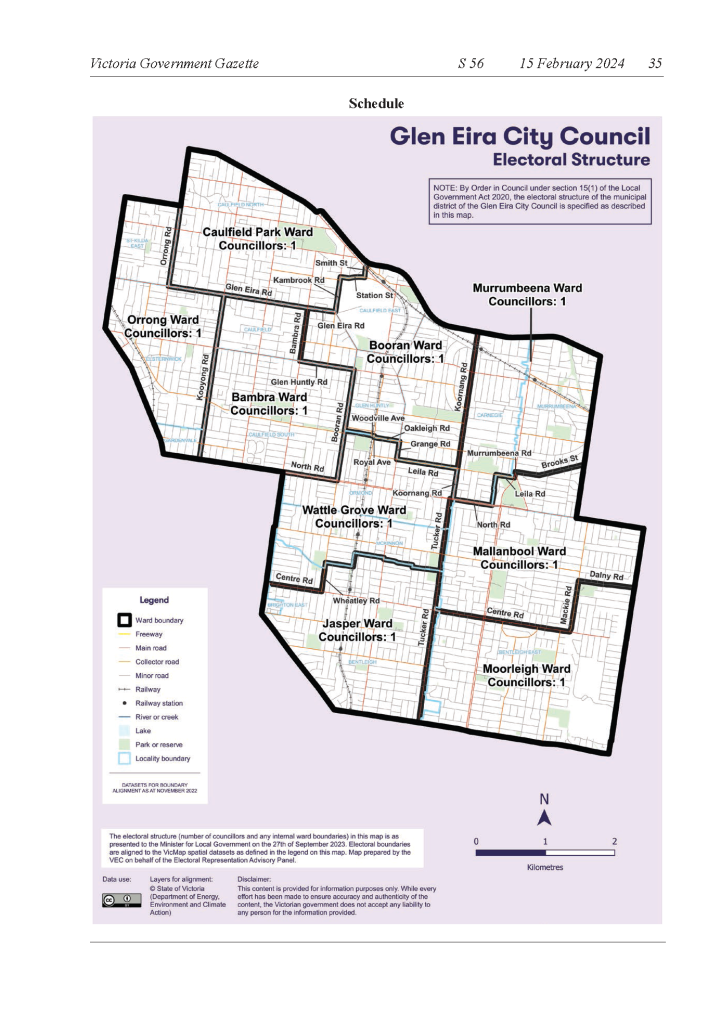
February 4, 2024
Landsdcaping & The Housing Strategy
Posted by gleneira under Councillor Performance, GE Council Meeting(s), GE Governance, GE Open Space, GE Planning, GE Service Performance1 Comment
Tuesday’s council agenda features the latest version of the Housing Strategy. Readers will remember that there was a huge outcry surrounding the proposal that all GRZ sites would have the mandatory garden requirement removed. On a positive note, this idea has now been abandoned!!!!!
Readers should also remember the persistent claims that council is fully committed to improving landscaping, increasing tree canopy across all of Glen Eira, and implementing the Urban Forest Strategy. The claim then was that with the removal of the mandatory garden requirement this would ensure better landscaping opportunities. So what has council done now to ensure that our tree canopy increases and all principles behind climate change and the growth of the Urban Forest is well on track?
Included below are the pages from the agenda (p144-145) which outline all the new landscaping proposals. The writing in red (and crossed out) shows what is currently in the planning scheme and the green notations are the new recommendations.
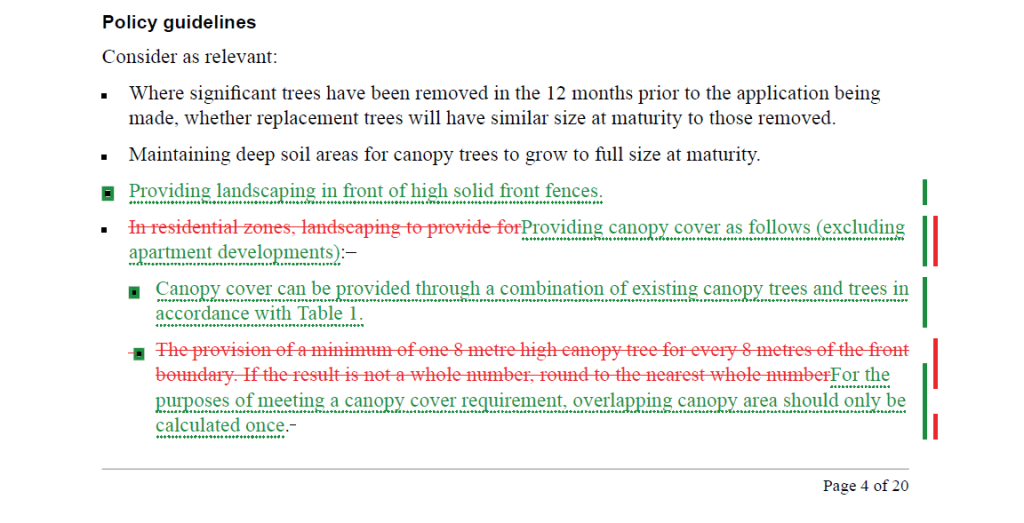

Please notice the following:
- The stated objective on page 144 is to: To strengthen landscape character across Glen Eira. If this is the case, then why are we told that apartments are ‘excluded’!!!!!! Surely apartments, and all GRZ and RGZ areas which would feature apartments are equally part of Glen Eira and deserve some decent landscaping?
- Gone entirely is the following from the planning scheme: The provision of a minimum of one 8 metre high canopy tree for every 8 metres of the front boundary. There is also the requirement for canopy trees in rear setbacks as stated with the following: The provision of a minimum of one 6 metre high canopy tree for every 8 metres of rear boundary in the Neighbourhood Residential Zone and the General Residential Zone. However, the resulting new schedules to the NRZ and GRZ zoning completely alter the above standards. All that we now get are these miniscule requirements –
FOR SOME SITES ZONED NRZ the schedules state:
Retain or provide canopy cover equivalent to at least 22 per cent of the site area, including at least one medium canopy tree within the front setback with a minimum mature height equal to the height of the roof OR THE EVEN WORSE ‘STANDARD’ OF – In addition to the requirements of B13, retain or provide at least one medium canopy tree within the front setback.
FOR THE GRZ AND RGZ ZONING ALL WE GET IS – In addition to the requirements of B13, retain or provide at least one canopy tree within the front setback
Please note that NO MENTION IS MADE OF REAR GARDEN REQUIREMENTS!!!!! Furthermore, given the reduction of both front, and rear setbacks in some of the proposed schedules, the end result can only be a further deterioration of our tree canopy and the sabotage of all council climate change policies.
Instead of using this opportunity to increase permeability in the GRZ, or at least maintain RESCODE street setbacks, council has forgotten all its promises, its policies, and its commitment to genuine climate change strategies. In short, this new version of the Housing Strategy, is nothing more than a return to the future in that single zoning and their schedules cover all GRZ and RGZ zones whilst others in the NRZ have increased site coverage, and a reduction in their current permeability requirements. In short, we are going backwards in order to cram as many new dwellings into Glen Eira as possible, and regardless of whether or not we need this development!
January 31, 2024
Why Genuine Consultation Is Dead In Glen Eira!
Posted by gleneira under Councillor Performance, GE Consultation/Communication, GE Governance, GE Open Space, GE Planning, GE Service Performance, GE Transport[9] Comments
Over the past few years more and more residents are feeling aggrieved at the bogus consultation methodologies that this council trots out. Here is a summary of what is wrong with the entire process –
- Survey questions are designed to elicit the required response. They are either totally irrelevant to the core issue or are simply vague and nothing more than motherhood statements. We are not told who designs these questions but more importantly whether they are first road tested with councillors and the community consultation committee. The latter group remains nothing but a public relations enterprise given that they have no real input into design or decision making of surveys or issues.
- Public forums are also carefully manipulated and engineered. Half of the time officers present their (positive) take on an issue and little time is left for resident queries and comments. Secondly the chat function is often turned off so that participants can’t communicate with each other and again recordings of the forums seldom are available to review. The latest forum on the Queen’s Avenue trees is the perfect example with council stating that they can’t release the video because of LXRP ‘requirements’ and conversely the LXRP stating that it is council’s forum and hence up to their discretion.
- Consultation summaries are anything but accurate representations of what was stated. Often residents have to be satisfied with a sprinkling of what participants said instead of being able to read in full everything that everyone stated. FOI requests are met with sheer nonsense such as releasing all commentary would be an impingement on council resources and take time away from their other business. When the survey responses are anonymous and collected in a single file the excuse of a drain on council resources is sheer bunkum!
- Often residents find themselves having to plough through hundreds upon hundreds of pages in order to get to the crux of the matter. Council refuses to provide short summaries of the major issues so that residents can know exactly what is at stake.
- Meetings with officers are generally a waste of time. They trot out all the positives but neglect any negatives. Furthermore the times set aside for such activities are mostly during the day – hardly suitable for people who work, or have small children.
So how can all this be fixed? Here are some suggestions that we’ve made in the past –
- Ensure that survey questions are reviewed by both councillors and the community consultation committee before anything goes public. Avoid generalities, closed questions, motherhood statements. Provide a short, succinct summary that addresses all the pros and cons of the matter. For major issues a Discussion paper is vital.
- Given that council was quite prepared to release all commentary on its consultations several years ago, the current approach on the most contentious issues such as structure planning and the housing strategy, has been to cover up and hide as much of the negative feedback as possible. This has to change. All comments, emails (redacted to protect privacy) must be available.
- Major consultations remain at the ‘consult’ level. According to the IAP2 we should surely be at the very least at the ‘involve’ level. Councillors have the power to ensure this occurs.
- Forums either public or Zoom must include the chat facility so that participants can interact. Secondly the full version must be available for those who missed out. The focus should always be on resident feedback and NOT officer reports.
- Finally, it is imperative that before residents are asked for their views, all information is provided to them. We have had councillors complaining that they don’t get to see some documentation prior to their voting, or that not sufficient time has been provided for them to digest the data. Residents also need to have all the facts before they commit to providing responses.
All of this is important if the community is to have any faith and confidence in this council. Refusing to implement genuine consultation only serves to foster suspicion and shows how the essential priority of transparency is moribund in Glen Eira.
January 10, 2024
Why Is Glen Eira So Against Developer Levies?
Posted by gleneira under Councillor Performance, GE Governance, GE Planning, GE Service Performance, GE Transport[6] Comments
Over the past few years we have heard time and again that rate-capping and cost shifting by federal and state government has caused uncertainty in Glen Eira’s ability to resource all its services and infrastructure. This has resulted in the closure of our early learning centres and the attempted sell off of aged care.
But how much is this financial ‘stress’ due to Glen Eira’s own grandiose plans and refusal to impose any sort of financial imposte on developers? In 2016, the planning scheme review noted time and again full resident support for a development contributions levy (DCL) and even a car parking waiver levy. Glen Eira used to have a DCL but it was allowed to expire in 2010 and has never been reintroduced. Even when the latest structure plans came up for decision the officers’ reports paid short shrift to the idea of introducing such a levy. Over the years we have had statements such as the following:
Incorporating a Development Contributions Plan into the Planning Scheme for Carnegie will not be able to be undertaken as part of Amendment C184 due to the length and complexity of this process and may be worth examining at a later date. (January 2020)
And in the November 2023 planning scheme review (without community consultation!!) we were told that the DCL is: On hold. Pushed back owing to other major strategic planning implementation, such as controls to implement structure plans.
Thus, since 2010 Glen Eira residents have been subsidising developers and there is no indication when this largesse will cease!
Other councils thankfully have not been so backwards in getting their priorities right and working to ensure that their residents aren’t subsidising developers to the hilt. The following screen dumps are all from councils which have been successful in introducing a DCL in the past 18 months into their planning scheme as well as a car parking waiver
WHITEHORSE
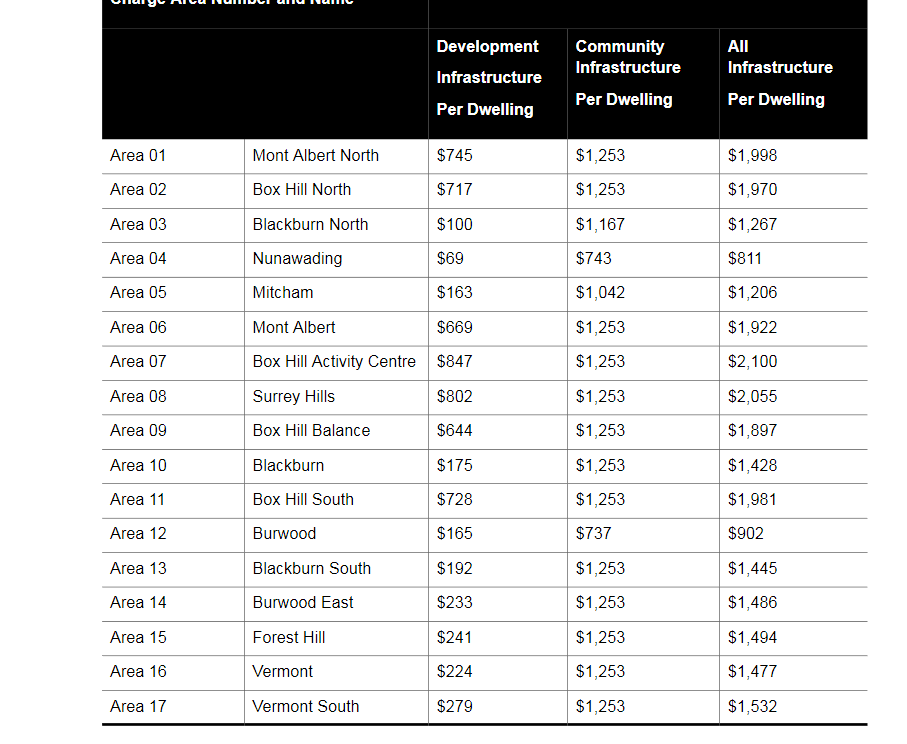
STONNINGTON
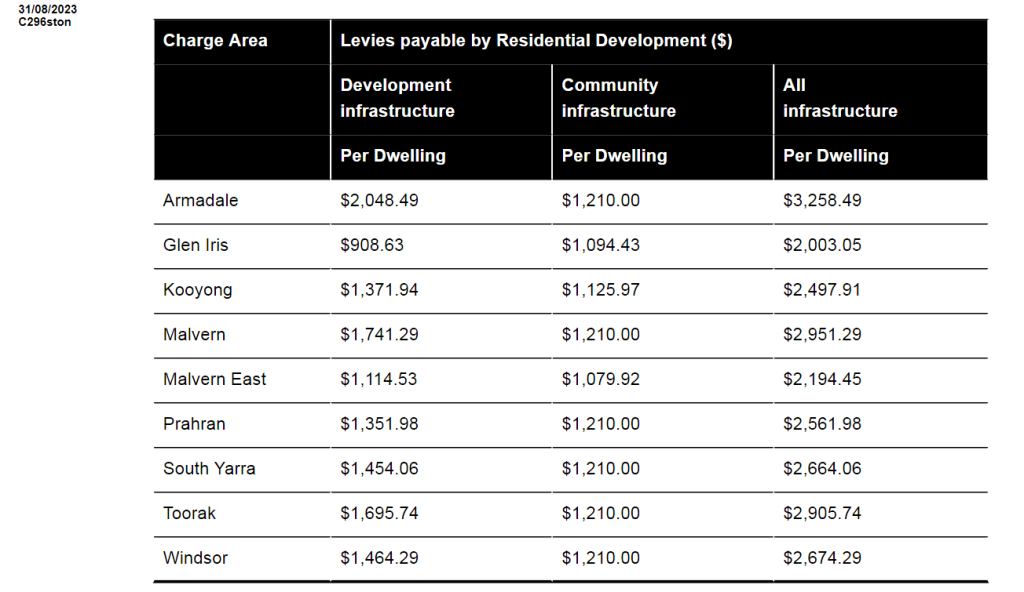
MERRIBEK
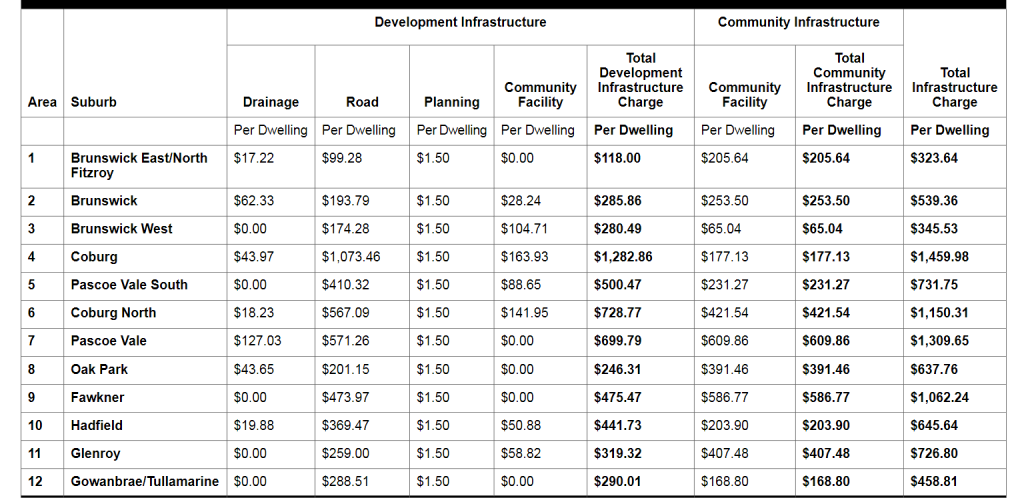
MARIBYRNONG
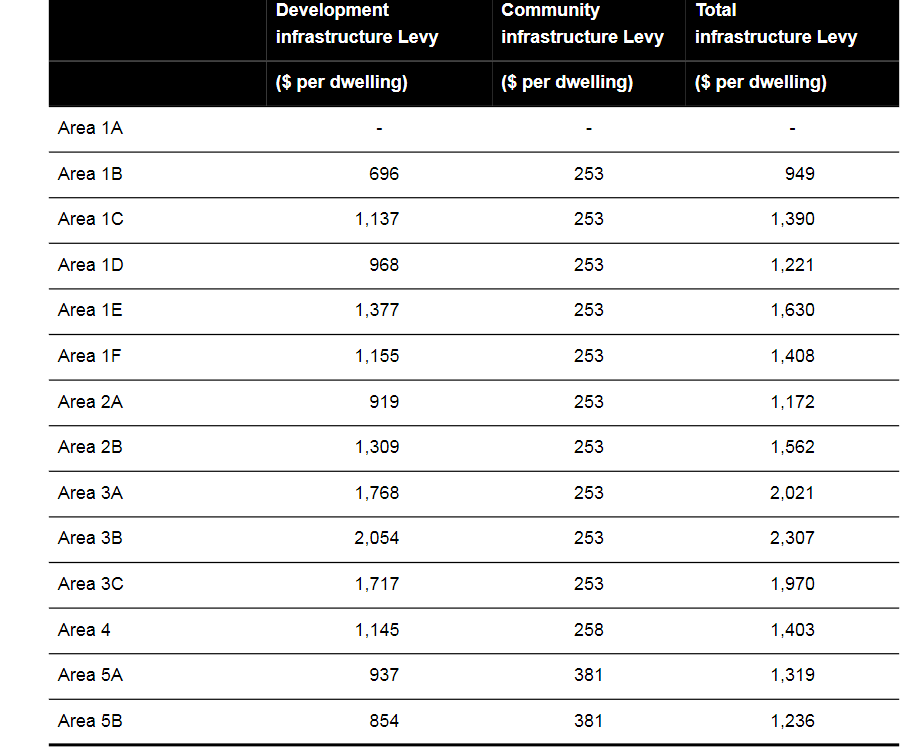
BRIMBANK

The first screen dump is from Whitehorse council. For its Box Hill Activity Centre the levy is $2,100 per residential dwelling. Glen Eira forecasts over 2000 net new dwellings just for Elsternwick alone. Doing the sums, with a DCL comparable to Whitehorse that could bring in over $4,000,000!!!! Add to this all the other major activity and neighbourhood centres alone, then the income could well and truly be hitting the $20M mark.
AND SOME CAR PARKING LEVIES



Over the years Council’s excuse for not (re)introducing a DCL was that the cost involved far outweighed the benefit! Surely this kind of argument would also apply to all of the above councils? Yet they have forged ahead. If the cost was truly prohibitive then surely they would have refrained?
The question remains: if other councils can achieve the gazetting of their DCL’s and car parking levies, then why is Glen Eira so reluctant to introduce something that was promised seven years ago and hasn’t existed for 14 years now? Instead of continually crying wolf and bemoaning rate capping etc Glen Eira Council needs to look at its own back yard. It can increase its revenue via these levies! It can cut spending by refusing to build taj mahals that are in the vicinity of $85+M and incurring massive interest repayments for the next decade and more. It can reduce spending on useless ‘consultations’ that are anything but genuine. There is no excuse possible for the failure to rein in costs and to source new revenue funds via these developer levies. Maybe then council might stop trying to flog off all our services such as childcare, aged care, home support, etc.
January 8, 2024
New Councillor: Jane Karslake
Posted by gleneira under Councillor Performance, Miscellaneous[2] Comments
The Victorian Electoral Commission (VEC) ran a recount vote this morning to elect a councillor to replace David Zyngier. Jane Karslake won the recount. We are yet to see the actual numbers on how the voting fell. This will be available in the next few days on the VEC website. Assuming that Ms Karlake signs the relevant papers she will represent Camden Ward.
Ms Karslake has twice stood for council elections in the past. We wish her well for the remainder of this term.